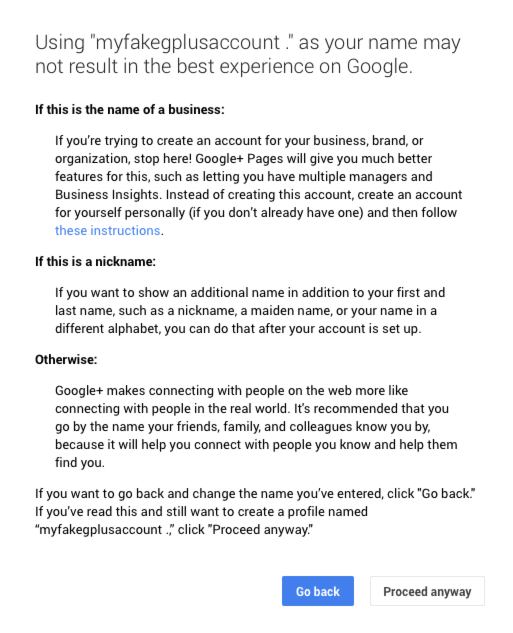Everything You Need To Know About The New Google+ Name Policy: An Explainer
- Fahad H

- Jul 16, 2014
- 3 min read

Yesterday’s news that Google+ has dumped its real-name requirement raised a number of interesting questions, both philosophical and practical.
Will Google+ become a haven for trolls? Will YouTube’s notorious commenters now be able to unleash more ugliness behind a fresh cloak of anonymity? What is the process for changing a user name? What if you want to use only one name? Is it possible to change a Google+ vanity url? What about display of usernames via authorship? Will we start seeing CatLuvr34 and the like on Google search and News pages?
I’ll do my best to answer the questions below. If you have others, leave them in comments or hit me up on Twitter or Google+ and I’ll try to help.
For its part, Google isn’t saying much about the change, mostly letting the Google+ post announcing the new policy to speak for itself. A Google spokesperson graciously answered our questions, but didn’t go into great detail. So I pulled from Google+ comments by Yonatan Zunger, the lead Google+ engineer, when I thought elaboration was necessary or interesting.
Has Google Made Changes to Authorship Display On Search And Google News?
Short answer. No. “Authorship is connected to your profile, and if you change your name, it will affect authorship as well,” the Google spokesperson wrote via email. Zunger’s response to the question was more blunt: “Authorship is linked to your profile URL. And if you care about authorship, then you presumably also care about the name you use on your account, so everything works out just fine. :)”
What’s The Process For Creating A One-Name Username?
Currently, Google still requires you to include two names when creating a Google+ username, but you can work around that by adding a period in the last name field. Zunger says he is working on a bug fix that will hide the period from the display. The Google spokesperson pointed users to this support page for more information.
I tested the process by creating a brand new fake account, and it works as advertised. (Note that after you have established a username, Google limits changes to one every three months.) Interestingly, Google is still nudging people to use real identities on the network, as this screen grab shows:

Can Google+ Pages Be Converted Into Profiles?
Some users created pages with their pseudonyms and now are asking if it’s possible to convert a page into a profile. Google’s response: “Sorry, not at the moment.”
Can Vanity URLs Be Changed?
Google allows the creation of custom URLs for profiles that include a profile photo, have at least 10 followers and are 30 days old. (Custom URLs for pages must be linked to a website).
The URLs cannot be changed and Google isn’t adjusting that policy: “Sorry, not at the moment.”
Is Google+ Doomed To Become A Troll Haven?
This obviously remains to be seen, but Zunger is confident that the Spam and Abuse team is prepared. “Oh, don’t worry,” he wrote on the G+ comment thread. “One of the reasons this is safe to launch is that our troll-smashing department has gotten very good at their jobs. :)”
Zunger also addressed the YouTube issue, responding to a commenter wondering if YouTube comments “will go back to being a steaming pile of monkey s—?”
“I don’t think so,” Zunger wrote. “I spent two years working closely with the YouTube team on comments, and I think we have a much better understanding of what turned them into the wretched hive of scum and villainy we all know. It had to do with more subtle aspects of the interface there: things like “top comments” rewarding people for getting the most interaction, rather than the most positive interaction. We’ve changed all of those broken behaviors that we could find and are definitely not changing those back. :)”








Comments